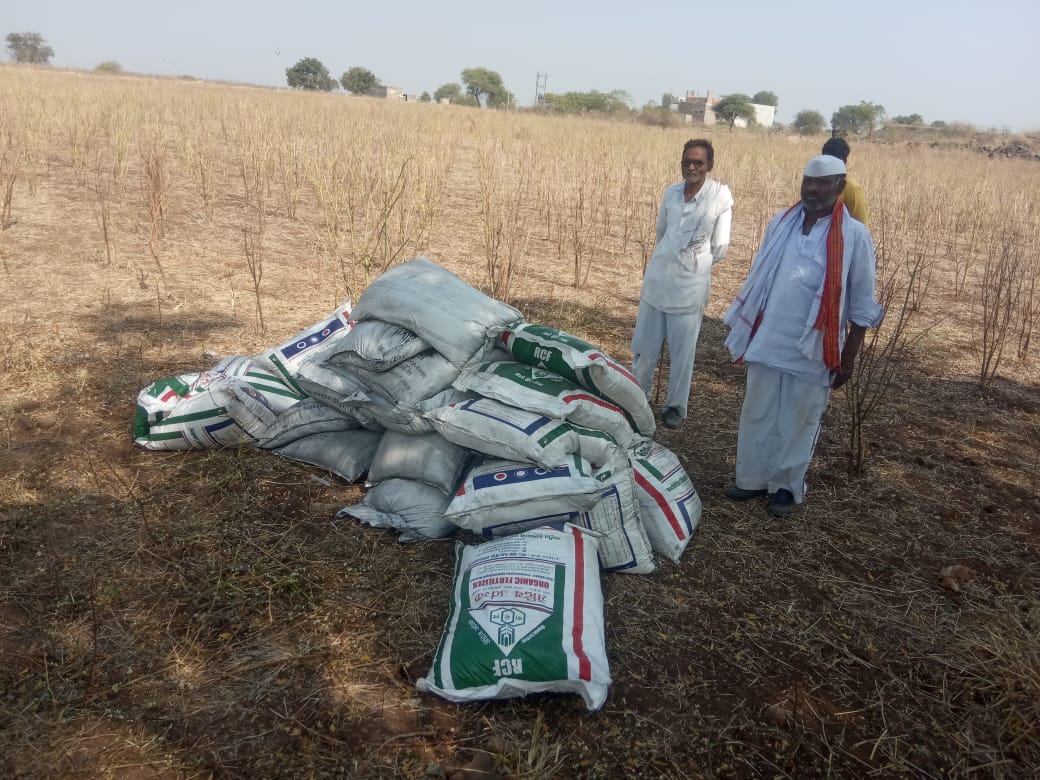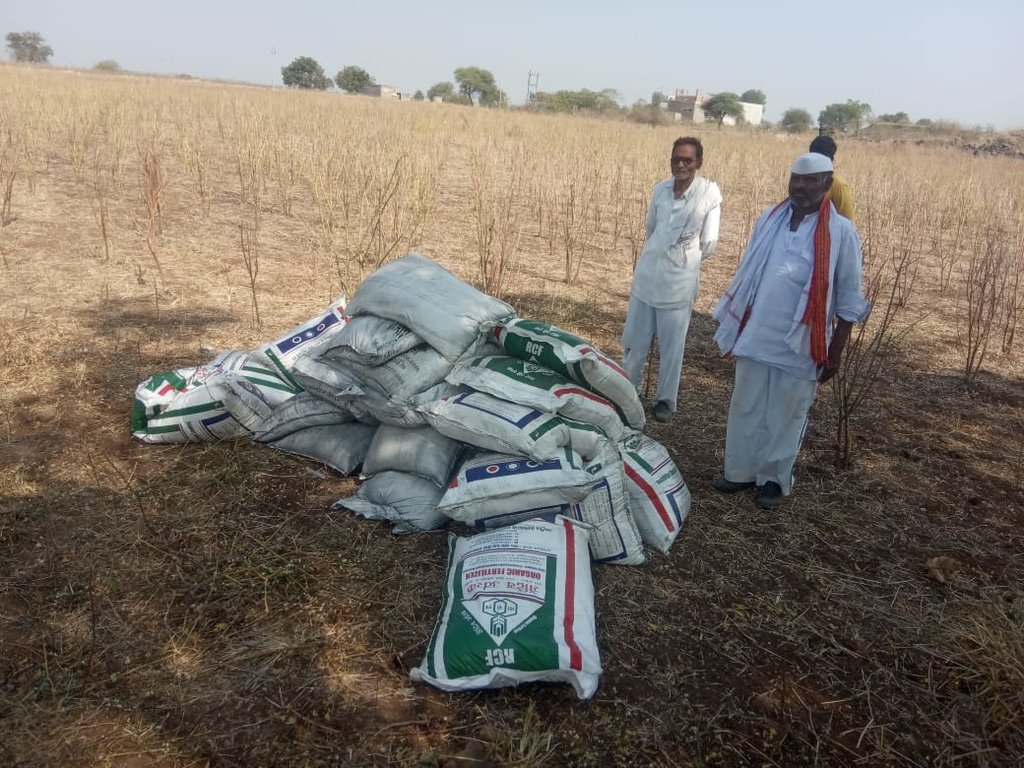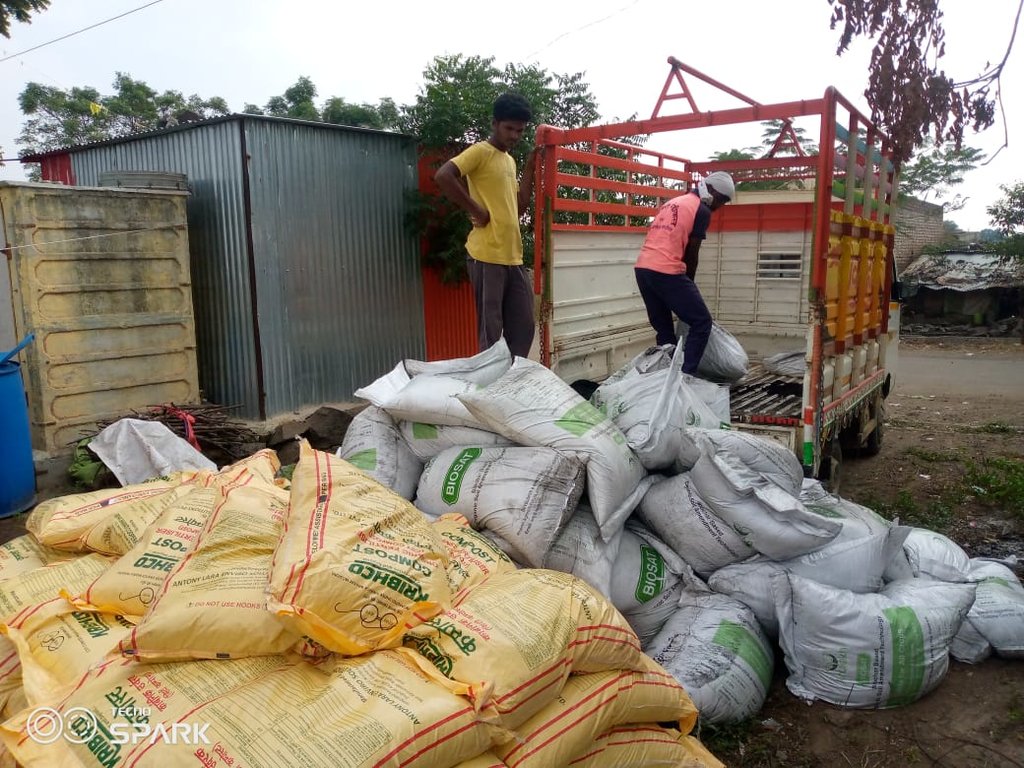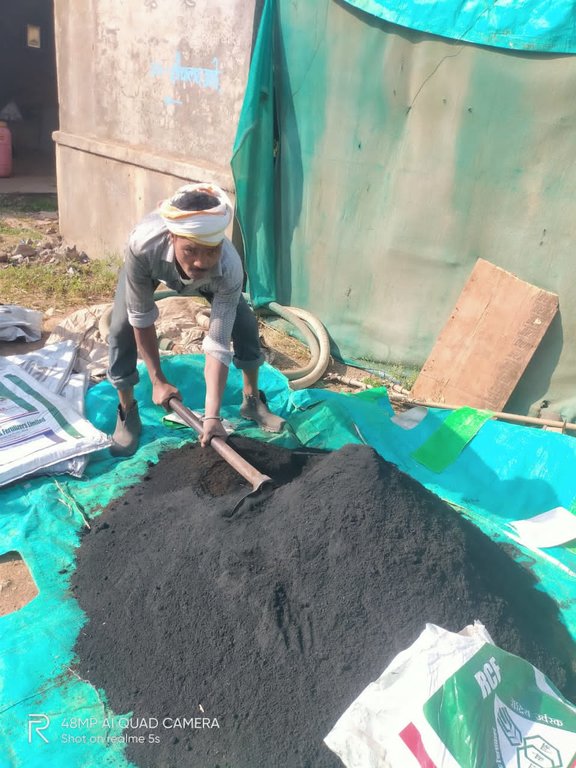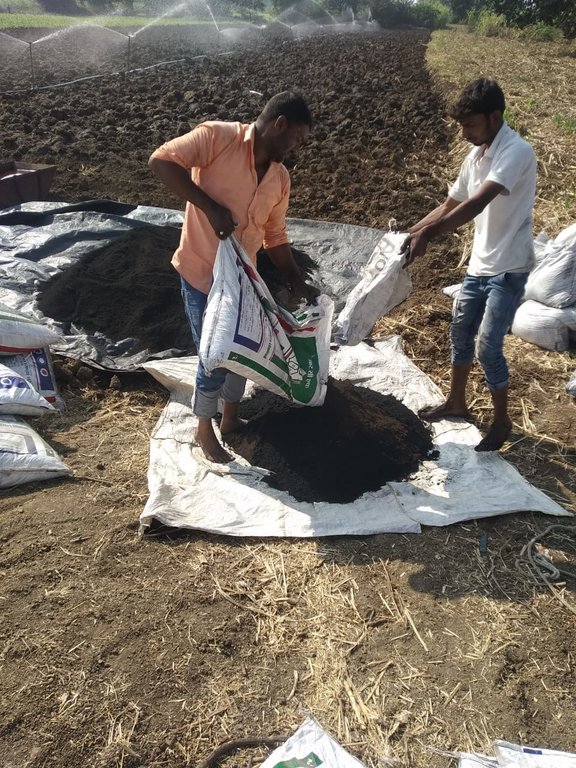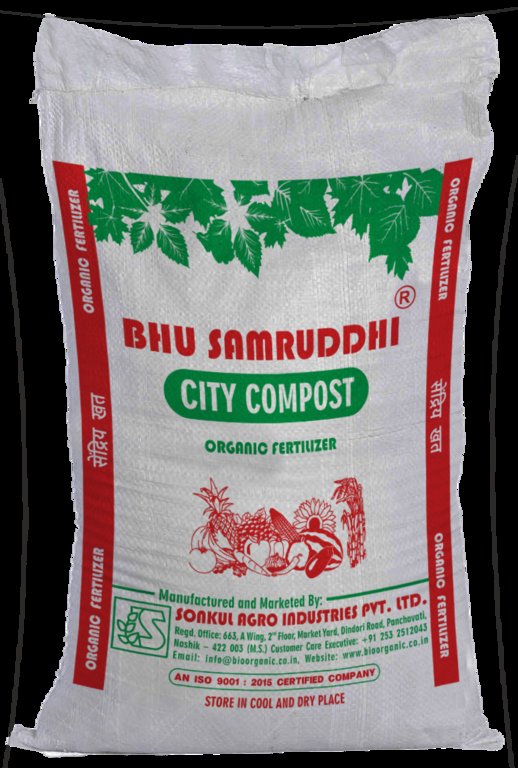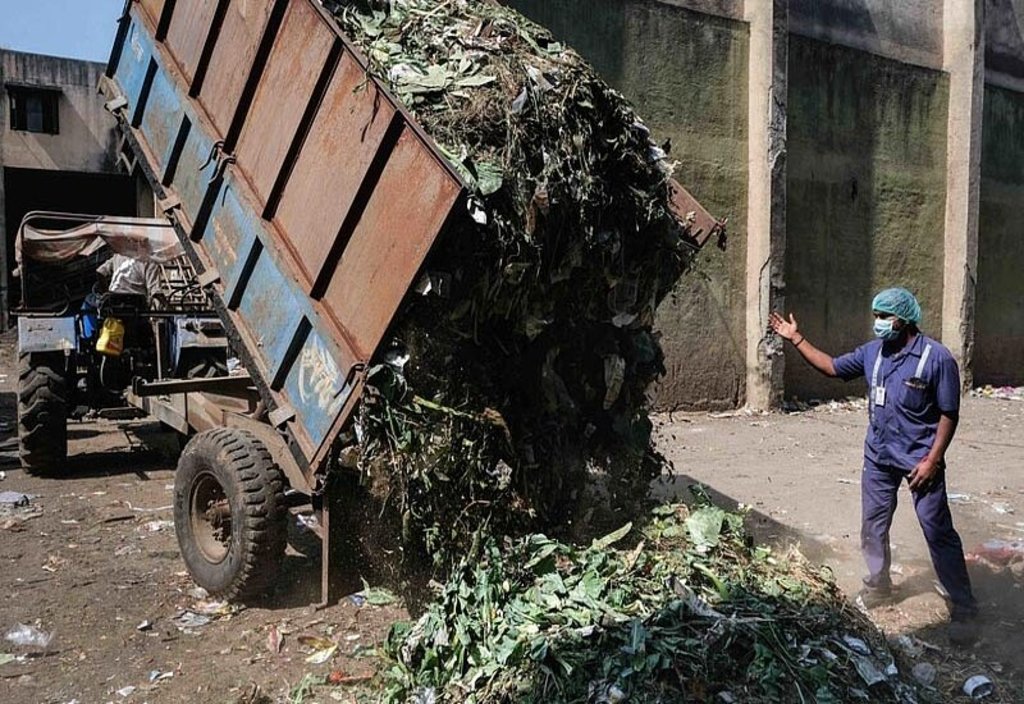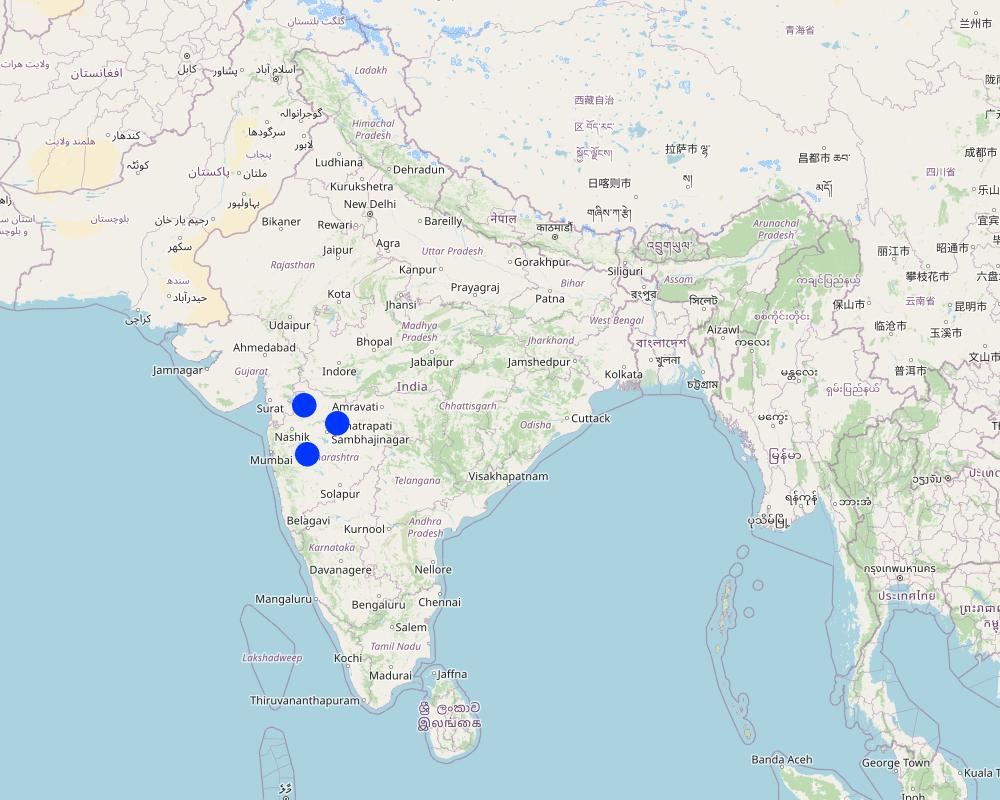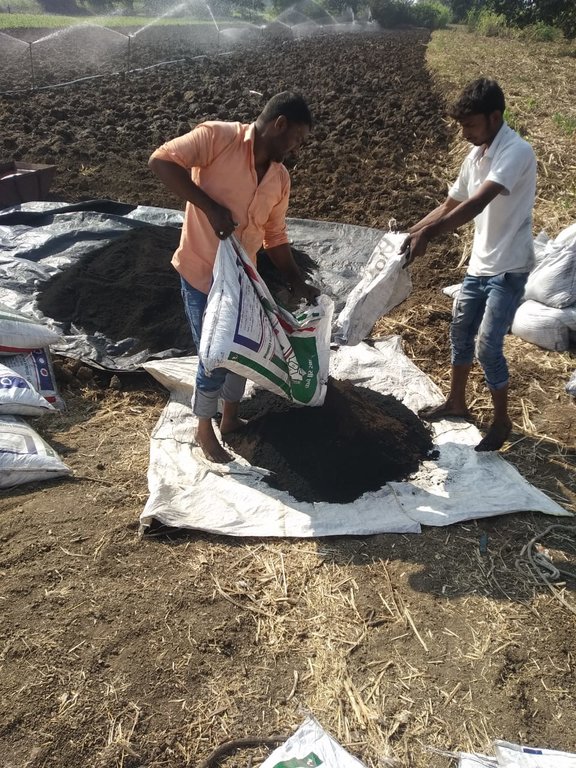City Compost: A Solution For Waste Management And Soil Health Improvement [Inde]
- Création :
- Mise à jour :
- Compilateur : Santosh Gupta
- Rédacteurs : Noel Templer, Stephanie Katsir
- Examinateurs : Udo Höggel, Joana Eichenberger
Khachra Khad
technologies_6728 - Inde
- Résumé complet en PDF
- Résumé complet en PDF pour impression
- Résumé complet dans le navigateur
- Résumé complet (non formaté)
- City Compost: A Solution For Waste Management And Soil Health Improvement: 3 octobre 2023 (inactive)
- City Compost: A Solution For Waste Management And Soil Health Improvement: 9 octobre 2023 (inactive)
- Le compost urbain : Une solution de gestion des déchets et d'amélioration de la santé des sols: 17 avril 2024 (public)
Voir les sections
Développer tout Réduire tout1. Informations générales
1.2 Coordonnées des personnes-ressources et des institutions impliquées dans l'évaluation et la documentation de la Technologie
Nom du projet qui a facilité la documentation/ l'évaluation de la Technologie (si pertinent)
Soil protection and rehabilitation for food security (ProSo(i)l)Nom du ou des institutions qui ont facilité la documentation/ l'évaluation de la Technologie (si pertinent)
Deutsche Gesellschaft für Internationale Zusammenarbeit (GIZ) GmbH (GIZ) - AllemagneNom du ou des institutions qui ont facilité la documentation/ l'évaluation de la Technologie (si pertinent)
Alliance Bioversity and International Center for Tropical Agriculture (Alliance Bioversity-CIAT) - KenyaNom du ou des institutions qui ont facilité la documentation/ l'évaluation de la Technologie (si pertinent)
Ecociate Consultants (Ecociate Consultants) - Inde1.3 Conditions relatives à l'utilisation par WOCAT des données documentées
Le compilateur et la(les) personne(s) ressource(s) acceptent les conditions relatives à l'utilisation par WOCAT des données documentées:
Oui
1.4 Déclaration sur la durabilité de la Technologie décrite
Est-ce que la Technologie décrite ici pose problème par rapport à la dégradation des terres, de telle sorte qu'elle ne peut pas être déclarée comme étant une technologie de gestion durable des terres?
Non
Commentaires:
The application of city compost improves the soil health
2. Description de la Technologie de GDT
2.1 Courte description de la Technologie
Définition de la Technologie:
The use of city compost is a sustainable solution for addressing the problem of waste management and soil degradation. Under this technology, urban municipal waste is composted and used as organic fertiliser in agriculture. This relieves the cities’ waste management, enhances rural soils and in turn improves farm productivity.
2.2 Description détaillée de la Technologie
Description:
In India, over 377 million people live in almost 8,000 cities or towns. They generate 62 million tons of municipal solid waste annually, according to the country’s government. More than 80% of such solid waste is deposited indiscriminately without treatment at dump yards in an unhygienic manner. In the Indian countryside, the ecological sustainability of agriculture has been at risk due to the excessive use of chemical fertilizers and monoculture since the ‘Green Revolution’ led to the degradation of land.
City compost is one of the solutions to both problems. Waste collected by municipal corporations is processed to make compost. During this process, organic waste is collected in the cities, recycled, processed to compost, and finally used as organic matter by farmers complementing the traditional farmyard manure. In such manner carbon that is contained in the waste is recycled back into the soil thus enhancing agricultural production.
Nashik Municipal Corporation in Nashik town of Maharashtra State in India has set-up a waste processing plant in the town. This plant processes the city’s organic waste into compost through a scientific process. The processed city compost is packed into bags of 50 kg each and these bags are supplied to fertilizer companies and further on to farmers. There are Government subsidies available to farmers for the purchase of compost bags subject to documentary proofs and other conditions.
Under the “Soil Protection and Rehabilitation for Food Security (ProSoil)” project of GIZ, farmers and FPOs (farmer producer organizations) have been supported for the application of city compost in their fields. Supported by the implementing agency WOTR (Watershed Organization Trust) the city compost application in farmer's fields in 3 districts of Maharashtra namely Ahmednagar, Jalna and Dhule has been introduced. Interventions covered more than 3000 farmers and around 1100 Acres of land. The entire intervention is implemented with the help of FPOs, which procured the city compost from ‘The Nashik Waste Management Centre’ and sold the procured material further to the farming communities. This has ensured easy availability to the farmers without incurring undue travel cost. Farmers applied the city waste compost in their farms during the month of May/June (before the onset of monsoon) to different crops.
City compost was applied to different crop combinations such as paddy-chickpea in Dhule District (moderate irrigation facility), greengram-sorghum in Ahmed Nagar District (Rainfed conditions) and soyabean-wheat in Jalna District (irrigated conditions). Farmers have seen the benefits of city compost across all crop combinations and geographies. The application of city compost has been of benefit to farmers in reducing the usage of synthetic fertilizers along with reducing the dependency on farmyard manure as it is getting scarce day by day. Farmers have also realized the improved soil health leading to better productivity of their farms.
The Indian government has also launched several initiatives to promote the use of city compost in agriculture. For example, the National Mission for Sustainable Agriculture provides financial assistance to farmers for the purchase of city compost, and the Fertilizer Control Order allows the use of city compost as a fertilizer. Although developing city waste as compost and its application in the farmer's field is a nascent approach from the India Government and other stakeholders, however looking at the availability of waste, the commitment of the Indian Government through its ‘Clean India Program’ and the vast issue of synthetic fertilizers usage and high subsidy burden, the use of city compost in agriculture has the potential to contribute to sustainable solutions in the area of waste management while improving soil health and reducing the use of synthetic fertilizers in India.
2.3 Photos de la Technologie
2.4 Vidéos de la Technologie
Commentaire, brève description:
https://www.youtube.com/watch?v=Jms1dp3DABU
2.5 Pays/ région/ lieux où la Technologie a été appliquée et qui sont couverts par cette évaluation
Pays:
Inde
Région/ Etat/ Province:
Maharashtra
Autres spécifications du lieu:
Ahmednagar, Jalna, Dhule
Spécifiez la diffusion de la Technologie:
- appliquée en des points spécifiques ou concentrée sur une petite surface
Est-ce que les sites dans lesquels la Technologie est appliquée sont situés dans des zones protégées en permanence?
Non
Commentaires:
The intervention is implemented with around 1100 farmers across the 3 districts namely Ahmednagar, Jalna and Dhule in the Indian state of Maharashtra
Map
×2.6 Date de mise en œuvre de la Technologie
Indiquez l'année de mise en œuvre:
2021
2.7 Introduction de la Technologie
Spécifiez comment la Technologie a été introduite: :
- au cours d'expérimentations / de recherches
- par le biais de projets/ d'interventions extérieures
Commentaires (type de projet, etc.) :
Developing city compost is a result of research by various agencies. However, the application of the city compost technology is part of the Pro-Soil project of GIZ.
3. Classification de la Technologie de GDT
3.1 Principal(aux) objectif(s) de la Technologie
- améliorer la production
- réduire, prévenir, restaurer les terres dégradées
- créer un impact économique positif
- Reduce municipal waste
3.2 Type(s) actuel(s) d'utilisation des terres, là où la Technologie est appliquée
Les divers types d'utilisation des terres au sein du même unité de terrain: :
Non

Terres cultivées
- Cultures annuelles
Cultures annuelles - Précisez les cultures:
- céréales - riz (de milieux secs)
- céréales - sorgho
- céréales - blé d'hiver
- légumineuses et légumes secs - fèves
- légumineuses et légumes secs - soja
Nombre de période de croissance par an: :
- 2
Précisez:
Paddy-Chickpea, Greengram-Sorghum, Soybean-Wheat
Est-ce que les cultures intercalaires sont pratiquées?
Oui
Si oui, précisez quelles cultures sont produites en culture intercalaire:
Maize, Vegetables, Fodder crops
Est-ce que la rotation des cultures est appliquée?
Oui
Si oui, veuillez préciser:
Mostly rotation happens during the winter crops. Chick-pea is replaced with gram or beans are replaced with other vegetables
Commentaires:
The intervention is mostly applied on cropland.
3.3 Est-ce que l’utilisation des terres a changé en raison de la mise en œuvre de la Technologie ?
Est-ce que l’utilisation des terres a changé en raison de la mise en œuvre de la Technologie ?
- Non (Passez à la question 3.4)
3.4 Approvisionnement en eau
Approvisionnement en eau des terres sur lesquelles est appliquée la Technologie:
- mixte: pluvial-irrigué
Commentaires:
The rainfall pattern varied from location to location and farmer to farmer depending upon the accessibility to canals and availability of resources to lift the ground water. Most farmers in Ahmednagar are rainfed farmers while in Jalna they have some irrigation facilities.
3.5 Groupe de GDT auquel appartient la Technologie
- système de rotation (rotation des cultures, jachères, agriculture itinérante)
- gestion intégrée de la fertilité des sols
- gestion des déchets/ gestion des eaux usées
3.6 Mesures de GDT constituant la Technologie

pratiques agronomiques
- A2: Matière organique/ fertilité du sol
Commentaires:
Application of city compost is an agronomic measure as it needs to be applied every year and is closely linked to the agricultural cycle. The application of city compost adds organic matter to the soil and improves the soil fertility.
3.7 Principaux types de dégradation des terres traités par la Technologie

dégradation chimique des sols
- Cn: baisse de la fertilité des sols et réduction du niveau de matière organique (non causée par l’érosion)
Commentaires:
Application of city compost can significantly reduce the usage of chemical fertilisers in the soil as it can supply the required nutrients to the soil. It is also a relatively cheap option.
3.8 Prévention, réduction de la dégradation ou réhabilitation des terres dégradées
Spécifiez l'objectif de la Technologie au regard de la dégradation des terres:
- restaurer/ réhabiliter des terres sévèrement dégradées
4. Spécifications techniques, activités, intrants et coûts de mise en œuvre
4.1 Dessin technique de la Technologie
Spécifications techniques (associées au dessin technique):
An overview of the field where city compost is applied
4.2 Informations générales sur le calcul des intrants et des coûts
Spécifiez la manière dont les coûts et les intrants ont été calculés:
- par superficie de la Technologie
Indiquez la taille et l'unité de surface:
Hectare
autre/ monnaie nationale (précisez):
INR
Indiquez le taux de change des USD en devise locale, le cas échéant (p.ex. 1 USD = 79.9 réal brésilien): 1 USD = :
80,0
Indiquez le coût salarial moyen de la main d'œuvre par jour:
200
4.3 Activités de mise en place/ d'établissement
Commentaires:
There are no establishment activities involved in the intervention as farmers are buying the city compost and applying it annually in their fields. The establishment of city compost plant is out of the purview of farmers and their institution.
4.4 Coûts et intrants nécessaires à la mise en place
Commentaires:
There is no establishment cost involved in the intervention as farmers are buying the city compost and applying annually in their fields. The establishment of a city compost plant is out of the purview of farmers and their institutions.
4.5 Activités d'entretien/ récurrentes
| Activité | Calendrier/ fréquence | |
|---|---|---|
| 1. | Purchase of city compost by FPO and transportation to the base location | April/May |
| 2. | Selling of the city compost among the farmers | May |
| 3. | Application of city compost in the field by farmers | May or early June |
| 4. | Mixing of the city compost in soil using the cultivator or rotavator | May/June (Immediately after the application) |
| 5. | Irrigation of the field | Mid June or at the onset of Monsoon (farmers having assured irrigation due with their own sources) |
| 6. | Sowing of the seeds | June or early July |
| 7. | Intercultural operations (Weeding, nutrient management, pest application, crop monitoring) | July-October |
| 8. | Harvesting of the crops | October/November |
Commentaires:
The timing of these activities may vary a bit based on the crops sown by the farmers or the onset of monsoon rains
4.6 Coûts et intrants nécessaires aux activités d'entretien/ récurrentes (par an)
| Spécifiez les intrants | Unité | Quantité | Coûts par unité | Coût total par intrant | % des coût supporté par les exploitants des terres | |
|---|---|---|---|---|---|---|
| Main d'œuvre | Application of city compost | Person days | 2,0 | 300,0 | 600,0 | 100,0 |
| Main d'œuvre | Irrigation | Person days | 2,0 | 300,0 | 600,0 | 100,0 |
| Equipements | Hired machinery for mixing the city compost in soil | Hours | 2,0 | 900,0 | 1800,0 | 100,0 |
| Engrais et biocides | City compost | Ton | 2,5 | 1200,0 | 3000,0 | 100,0 |
| Coût total d'entretien de la Technologie | 6000,0 | |||||
| Coût total d'entretien de la Technologie en dollars américains (USD) | 75,0 | |||||
Commentaires:
The cost towards other operations such as sowing, intercultural operations, pest management and harvesting is not covered here as these costs are not directly associated with the documented intervention.
4.7 Facteurs les plus importants affectant les coûts
Décrivez les facteurs les plus importants affectant les coûts :
The cost of city compost is available at a subsidised price of INR 1000 per ton incl. transportation. Non-subsidised prices range at INR 3000 per ton plus transportation. Project farmers could get it at subsidised rates. However, the non-availability of required documents may be a hindrance for farmers to avail the subsidised prices.
5. Environnement naturel et humain
5.1 Climat
Précipitations annuelles
- < 250 mm
- 251-500 mm
- 501-750 mm
- 751-1000 mm
- 1001-1500 mm
- 1501-2000 mm
- 2001-3000 mm
- 3001-4000 mm
- > 4000 mm
Spécifiez la pluviométrie moyenne annuelle (si connue), en mm:
566,00
Spécifications/ commentaires sur les précipitations:
On an average, there are 34 rainy days (i.e. days with rainfall of 2.5 mm or more) in a year in the district. The major rainfall is usually received during months of June to September.
Indiquez le nom de la station météorologique de référence considérée:
IMD, Pune
Zone agro-climatique
- semi-aride
The project area comes under the scarcity zone, which is characterised by very low and erratic nature of rainfall, this affects the moisture content in the soil, therefore, this zone is commonly known as a drought-prone area. There is a high scarcity of irrigation water after the month of December. Thus, farmers mostly cultivate crops which can withstand very low water supplies.
5.2 Topographie
Pentes moyennes:
- plat (0-2 %)
- faible (3-5%)
- modéré (6-10%)
- onduleux (11-15%)
- vallonné (16-30%)
- raide (31-60%)
- très raide (>60%)
Reliefs:
- plateaux/ plaines
- crêtes
- flancs/ pentes de montagne
- flancs/ pentes de colline
- piémonts/ glacis (bas de pente)
- fonds de vallée/bas-fonds
Zones altitudinales:
- 0-100 m
- 101-500 m
- 501-1000 m
- 1001-1500 m
- 1501-2000 m
- 2001-2500 m
- 2501-3000 m
- 3001-4000 m
- > 4000 m
Indiquez si la Technologie est spécifiquement appliquée dans des:
- non pertinent
Commentaires et précisions supplémentaires sur la topographie:
The altitude of district ranges from 500 to 750 meter above sea level. Except a little over 4% area, most part of the district is plain area.
5.3 Sols
Profondeur moyenne du sol:
- très superficiel (0-20 cm)
- superficiel (21-50 cm)
- modérément profond (51-80 cm)
- profond (81-120 cm)
- très profond (>120 cm)
Texture du sol (de la couche arable):
- moyen (limoneux)
Texture du sol (> 20 cm sous la surface):
- moyen (limoneux)
Matière organique de la couche arable:
- faible (<1%)
Si disponible, joignez une description complète du sol ou précisez les informations disponibles, par ex., type de sol, pH/ acidité du sol, capacité d'échange cationique, azote, salinité, etc.
Soils vary from reddish brown to dark grey and are commonly grouped as light to medium black soils. In very few places deep black soil is also observed.
5.4 Disponibilité et qualité de l'eau
Profondeur estimée de l’eau dans le sol:
> 50 m
Disponibilité de l’eau de surface:
faible/ absente
Qualité de l’eau (non traitée):
uniquement pour usage agricole (irrigation)
La qualité de l'eau fait référence à:
eaux souterraines
La salinité de l'eau est-elle un problème? :
Oui
Précisez:
As per the water samples collected by the Central Ground Water Board, 73% samples were reported as high salinity water (EC in the range of 750-2250 qS/cm). Please refer to: (http://cgwb.gov.in/District_Profile/Maharashtra/Ahmadnagar.pdf
La zone est-elle inondée?
Non
Commentaires et précisions supplémentaires sur la qualité et la quantité d'eau:
A large majority of the area is a water scarce area with a dry long spell being a common feature. As indicated above the quality of water is also poor, which makes it even unusable for irrigation. During the last couple of years there has been enormous efforts to develop the surface water harvesting infrastructure in project areas.
5.5 Biodiversité
Diversité des espèces:
- faible
Diversité des habitats:
- moyenne
Commentaires et précisions supplémentaires sur la biodiversité:
The western hilly part of Ahmednagar District has forests. Teak, Babul, Dhavada, Haldu and Neem are trees found in these forests. Fruit trees like Mango, Tamarind, Amala, Bor are also found in the District.
5.6 Caractéristiques des exploitants des terres appliquant la Technologie
Sédentaire ou nomade:
- Sédentaire
Orientation du système de production:
- exploitation mixte (de subsistance/ commerciale)
Revenus hors exploitation:
- 10-50% de tous les revenus
Niveau relatif de richesse:
- moyen
Individus ou groupes:
- individu/ ménage
- coopérative
Niveau de mécanisation:
- traction animale
- mécanisé/ motorisé
Genre:
- femmes
- hommes
Age des exploitants des terres:
- jeunes
- personnes d'âge moyen
Indiquez toute autre caractéristique pertinente des exploitants des terres:
Due to poor rainfall patterns and non-availability of irrigation, most farmers are in a position to cultivate only 1-2 food crops in the year. The prevalence of cash crops is very minimal. Farmers have been grouped into 4 farmer-producer organisations formed under the Pro-Soil Project. All of these groups have a good representation of women farmers.
5.7 Superficie moyenne des terres utilisées par les exploitants des terres appliquant la Technologie
- < 0,5 ha
- 0,5-1 ha
- 1-2 ha
- 2-5 ha
- 5-15 ha
- 15-50 ha
- 50-100 ha
- 100-500 ha
- 500-1 000 ha
- 1 000-10 000 ha
- > 10 000 ha
Cette superficie est-elle considérée comme de petite, moyenne ou grande dimension (en se référant au contexte local)?
- petite dimension
Commentaires:
A large majority of the land users are small and marginal farmers
5.8 Propriété foncière, droits d’utilisation des terres et de l'eau
Propriété foncière:
- individu, avec titre de propriété
Droits d’utilisation des terres:
- individuel
Droits d’utilisation de l’eau:
- communautaire (organisé)
- individuel
Est-ce que les droits d'utilisation des terres sont fondés sur un système juridique traditionnel?
Oui
Commentaires:
All the project farmers have land titles either in their name or their family members' name. These land rights are transferred among the family members as part of the Indian land transfer systems.
5.9 Accès aux services et aux infrastructures
santé:
- pauvre
- modéré
- bonne
éducation:
- pauvre
- modéré
- bonne
assistance technique:
- pauvre
- modéré
- bonne
emploi (par ex. hors exploitation):
- pauvre
- modéré
- bonne
marchés:
- pauvre
- modéré
- bonne
énergie:
- pauvre
- modéré
- bonne
routes et transports:
- pauvre
- modéré
- bonne
eau potable et assainissement:
- pauvre
- modéré
- bonne
services financiers:
- pauvre
- modéré
- bonne
Commentaires:
In terms of infrastructure and services, Ahmednagar is well-connected with most services. However, still there is a scope to improve these further to make farmers' life better.
6. Impacts et conclusions
6.1 Impacts sur site que la Technologie a montrés
Impacts socio-économiques
Production
production agricole
Quantité avant la GDT:
1800 kg
Quantité après la GDT:
2300 kg
Commentaires/ spécifiez:
Based on the assessment of the project implementing agency. However, crop production increases are not only to city compost. There were other technologies, which have also contributed to improving productivity. There is no assessment for the stand-alone compost intervention.
qualité des cultures
Commentaires/ spécifiez:
Reduced usage of synthetic fertilisers made the grains and pluses safer for consumption
Revenus et coûts
dépenses pour les intrants agricoles
Quantité avant la GDT:
3600
Quantité après la GDT:
3200
Commentaires/ spécifiez:
Reduced cost towards synthetic fertilisers
revenus agricoles
Commentaires/ spécifiez:
Improved income due to improved productivity. Quantifiable numbers are however, not available.
Impacts socioculturels
sécurité alimentaire/ autosuffisance
institutions communautaires
Commentaires/ spécifiez:
Training and handholding support was provided from the project for procurement of city compost, governance and other areas.
Impacts écologiques
Sols
humidité du sol
matière organique du sol/ au dessous du sol C
Commentaires/ spécifiez:
Reported by the implementing agency
Précisez l'évaluation des impacts sur site (sous forme de mesures):
Overall, city compost has replaced the usage of synthetic fertilisers
6.2 Impacts hors site que la Technologie a montrés
Précisez l'évaluation des impacts extérieurs (sous forme de mesures):
The off-site impact can be contributed in terms of the reduction of waste at the waste processing site. However, this may not directly be linked to farmers' application of city compost in their farms.
6.3 Exposition et sensibilité de la Technologie aux changements progressifs et aux évènements extrêmes/catastrophes liés au climat (telles que perçues par les exploitants des terres)
Changements climatiques progressifs
Changements climatiques progressifs
| Saison | Augmentation ou diminution | Comment la Technologie fait-elle face à cela? | |
|---|---|---|---|
| températures annuelles | augmente | pas connu | |
| températures saisonnières | hiver | augmente | pas connu |
| précipitations annuelles | décroît | modérément |
Extrêmes climatiques (catastrophes)
Catastrophes climatiques
| Comment la Technologie fait-elle face à cela? | |
|---|---|
| canicule | pas connu |
| vague de froid | pas connu |
| conditions hivernales extrêmes | pas connu |
| sécheresse | modérément |
Commentaires:
The technology being very new its long-term impact of it is not well documented or assessed. However, compost in general is good for maintaining soil moisture and thus suited to the conditions of long dry spells.
6.4 Analyse coûts-bénéfices
Quels sont les bénéfices comparativement aux coûts d'entretien récurrents (du point de vue des exploitants des terres)?
Rentabilité à court terme:
légèrement positive
Rentabilité à long terme:
très positive
Commentaires:
City compost does not have any establishment cost at the farmers' level. In terms of maintenance cost, it is beneficial to farmers both in short term and long run.
6.5 Adoption de la Technologie
- 1-10%
Si disponible, quantifiez (nombre de ménages et/ou superficie couverte):
1100
De tous ceux qui ont adopté la Technologie, combien d'entre eux l'ont fait spontanément, à savoir sans recevoir aucune incitation matérielle, ou aucune rémunération? :
- 91-100%
Commentaires:
Most of the farmers have paid the money for buying the city compost from FPOs. Support from the project has been towards creating awareness, setting up the demonstration plots and handholding of FPOs.
6.6 Adaptation
La Technologie a-t-elle été récemment modifiée pour s'adapter à l'évolution des conditions?
Non
6.7 Points forts/ avantages/ possibilités de la Technologie
| Points forts/ avantages/ possibilités du point de vue de l'exploitant des terres |
|---|
| A good replacement for farmyard manure (dung) as its availability is a challenge due to reduction in numbers of livestock |
| Improved productivity of major crops |
| Farmers have observed improvement in soil moisture and soil texture which indicates a better soil health |
| Points forts/ avantages/ possibilités du point de vue du compilateur ou d'une autre personne ressource clé |
|---|
| This is an excellent mechanism to promote the waste management and address this long-standing problem of the country |
| An economically cheaper option to meet the composting needs of farmers thus promoting the natural farming |
| A good business line for FPOs as city compost is generally not available in the market |
| In the longer run, regular application of compost can improve the soil organic carbon |
6.8 Faiblesses/ inconvénients/ risques de la Technologie et moyens de les surmonter
| Faiblesses/ inconvénients/ risques du point de vue de l’exploitant des terres | Comment peuvent-ils être surmontés? |
|---|---|
| Currently available in Nashik city only which is 150 km from the project area | Collective procurement by FPO and selling it to its members |
| Prices of city compost are very high at the non-subsidised prices | Farmers can keep their documents updated to get the subsidised compost. Also put up an application to concerned authorities for continuation of subsidy. |
| Faiblesses/ inconvénients/ risques du point de vue du compilateur ou d'une autre personne ressource clé | Comment peuvent-ils être surmontés? |
|---|---|
| Regular supply from the waste processing plants. Many such plants do not operate regularly due to internal and external reasons. | FPOs can undertake some longterm contracts with the company. Also in the long run they can set-up small plants for local-level composting. |
7. Références et liens
7.1 Méthodes/ sources d'information
- visites de terrain, enquêtes sur le terrain
10
- interviews/entretiens avec les exploitants des terres
4
- interviews/ entretiens avec les spécialistes/ experts de GDT
2
- compilation à partir de rapports et d'autres documents existants
3
Quand les données ont-elles été compilées (sur le terrain)?
06/04/2023
7.3 Liens vers les informations pertinentes en ligne
Titre/ description:
City compost in India – from waste to healthy soil
URL:
https://www.rural21.com/english/covid-19-dossier/detail/article/city-compost-in-india-from-waste-to-healthy-soil.html
Liens et modules
Développer tout Réduire toutLiens
Aucun lien
Modules
Aucun module trouvé


